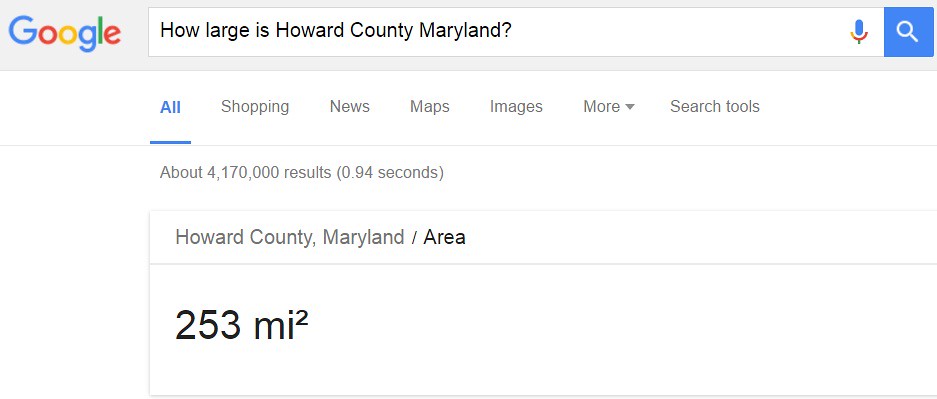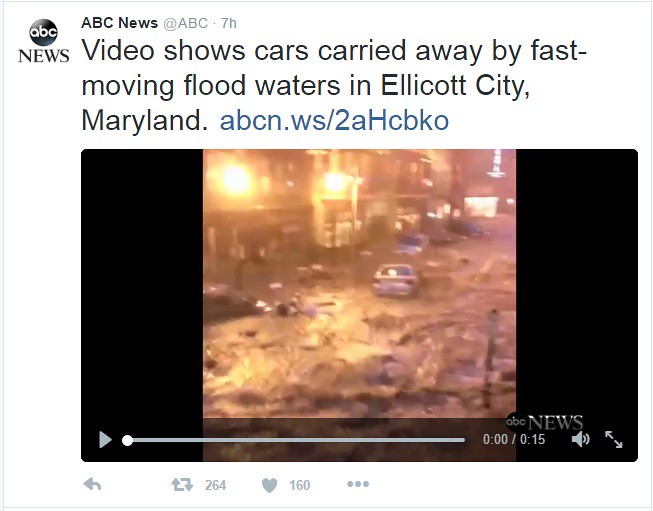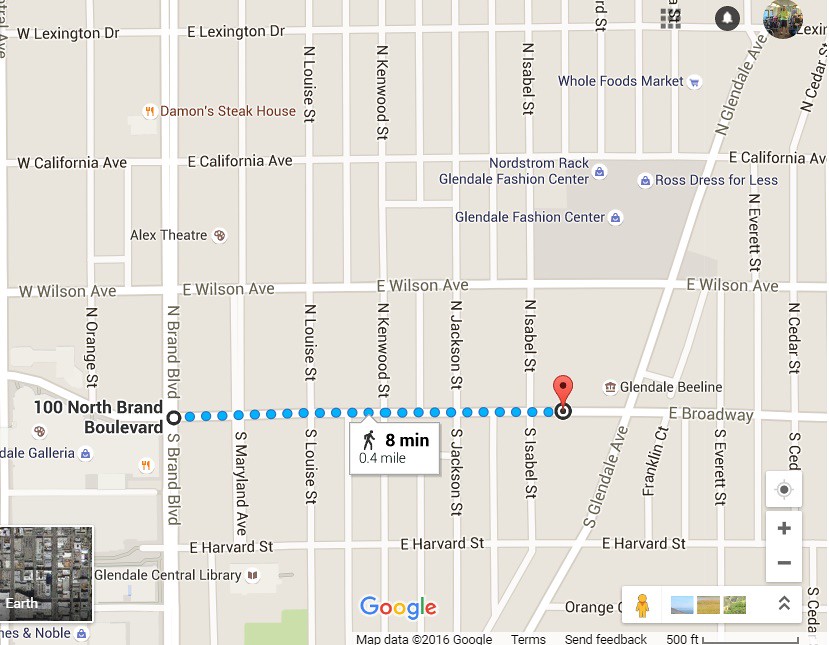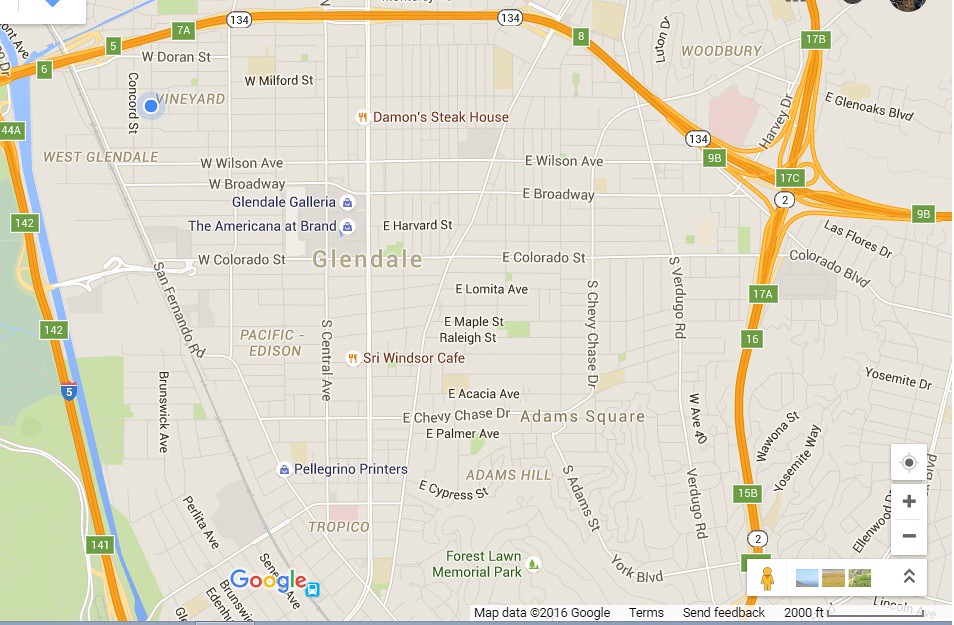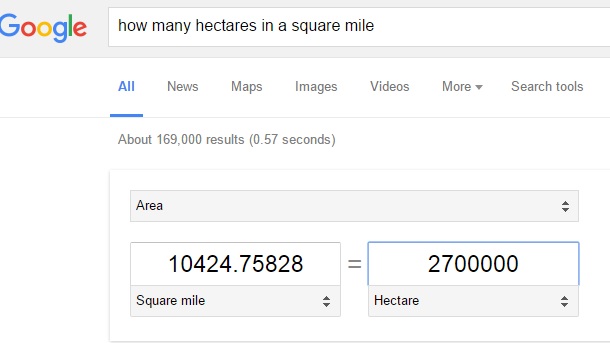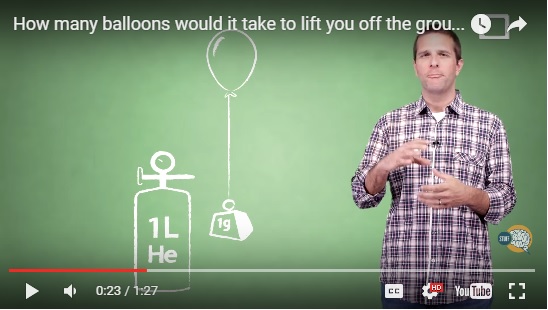Based on the past blog post topics regarding "floods" and large volumes of water, I could not help but wonder how much water really fell on Elliot City. Elliott City is located within Howard County (Maryland). Below are the results of reported statistics of rainfall.
How Much Rain Is In 12-Inches Of Rain?
According to an article on the news website "ABCnewsgo.com" titled "Flash Flooding, Storms Cause Havoc in Parts of Maryland and New Jersey" between 10-12 inches of rain has fallen over Howard County:
Video captured on Instagram showed cars on at least one street in Ellicott City being carried away in what looked like a tide. A state of emergency was declared for Howard County, and local ABC affiliate WJLA-TV reported "10 to 12 inches of flowing water" along with damages that would take "days to weeks of clean up."
The flash flooding caused a tremendous amount of rain to fall. In New Jersey, the situation is not better. Here is another excerpt from the article above:
In Princeton, New Jersey, water reached waist-deep levels, and in Plainsboro, New Jersey, WABC-TV, an ABC station in New York, reported that cars were rendered immobile by floods, and that there were power outages around that region. Six inches of rain hit parts of the state.
These descriptions along with other articles and video on the internet show an unprecedented amount of rain falling on the region. In order to fully grasp the content being shown on various websites, a few calculations need to be done to cast the volume of rain into perspective. Through dimensional analysis, we can figure out the volume of the rain that has been dropped on the entire county (by approximation) and then use a metric to cast that volume into perspective. Lets start.
To start the calculation, we need to know the area of Howard County (in Maryland). How might we find that value? Why not ask "Google.com"? Here are the results of my search below as shown:
The total area of Howard County is 253 square miles. Next, according to the news account above, the area received around a foot of rain (reported 10-12 inches). Remember, the calculations are approximations to inspire readers to think about the relative volumes of rain that come with such natural disasters.
In order to calculate a volume, we need to have an equation for volume -- which is expressed as follows:
Since we know an area (expressed in units) in square miles, a conversion will be necessary given that the reported height in rainfall is expressed in units of "feet." The conversion factor from square miles to square feet needs to be obtained. Again, why not ask "Google.com"? Here are the results:
For ever square mile, there are 27,880,000-feet. Roughly, Twenty-Eight million square feet per square mile! With the conversion factor known between units in hand, the calculation can be accomplished as follows:
The number 7.05 billion square feet is the area of Howard County expressed in units of square feet. First, notice that the number is significantly greater than 253 square miles (which is good) -- signifying that the units are correct. Next, the area is one part needed to carry out the calculation of the total volume of rain in the equation above.
With the height of the rainfall reported to be around a foot (12 inches), the volume expression shown above can be solved as shown below to calculate the total volume of rain:
That is an extremely large number of cubic feet of rain. I like to view a numerical value for volume in units of gallons. I can easily open the refrigerator up in my house and look at a gallon of milk to get a rough idea of the basic unit - the gallon.
The conversion factor between cubic feet and gallons can be obtained from a previous blog (written about the recent torrential rainfall in China). In every cubic foot of water, there are 7.48052 gallons of water. With this in mind, the calculation of converting units from cubic feet to gallons is straightforward and shown below:
All together, the total rainfall that Howard County (in Maryland) received was an astounding (an incomprehensible) 53 billion gallons. How can we get our heads around the value of 52.7 billion gallons of rain? Lets try using a metric below to visualize . Read on to find out!
How Many Empire State Buildings Could be filled?
To really understand the magnitude of that volume of rain, a proper metric is needed. How about using the Empire State Building? Here is a picture taken from the "Wikipedia" page shown below:
Source: Wikipedia
How many Empire State Buildings would be filled with 7.05 billion cubic feet of water?
In order to carry out the calculation, the volume of the Empire State Building (shown in the picture above) must be known. If you do a search in "Google.com" you will find the answer to be located on a website "ESBNYC.com" with a stated value shown below:
Bullet statement #6 states that the total volume of the Empire State Building is 37 million cubic feet. Wow. That is large. How does 37 million cubic feet of space compare with the total volume of rainfall across Howard County of 7.05 billion cubic feet? Obviously, the answer will entail a multiplication factor between the two. The calculation of the number of Empire State Buildings that would be filled is shown below:
Wow, Wow, Wow! The result really drives home the point of using dimensional analysis to cast a metric to put the volume into perspective. Although, as with other large volume analyses on this website (click on the tag Large Volume Analysis to access all), the number of structures that could be filled are truly incomprehensible. Although, the utility of performing dimensional analysis is to give the reader an idea of the scale of the problem (or natural disaster).
What do I mean by the last sentence?
Upon calculating the number of Empire State Buildings that could be filled to be 190 buildings, one can try to visualize the following: Imagine spreading the volume of 190 Buildings stacked together over an area of 253 square miles. The volume would obviously shrink as the area increases to eventually cover 12 inches.
After spreading the volume contained in the Empire State Buildings out to an area of 253 square miles, the picture would look like the following taken from "Twitter" shown below:
In the picture above, the cars are being carried down the street by the rainfall which resulted in extreme flooding. Regardless of the analysis that we try to perform here on this site, any loss of life is incomprehensible as well. Natural disasters cause a person to take a step back and appreciate what life we have. I hope that you do the same too as watching this one unfold on social media.
Conclusion...
Any loss of life due to natural disasters is a terrible thing to have to consider. The amount of rainfall that fell over the weekend on Elliot City and broader -- Howard County inflicted great damage. The analyses here showed the volume to be around 190 Empire State Buildings worth of water. Yes, that is correct. The amount of rainfall could fill 190 buildings -- Wow.
For a homework assignment, figure out the amount of Mercedes Benz Superdome (pictured below) that could be filled with the equivalent volume of water.
Source: Wikipedia
Before you carry out the calculation, take a guess whether the amount of Superdomes would be greater or lesser than the amount of Empire State Buildings. Provide your answer in the comments sections below. Until next time, have a great day!
